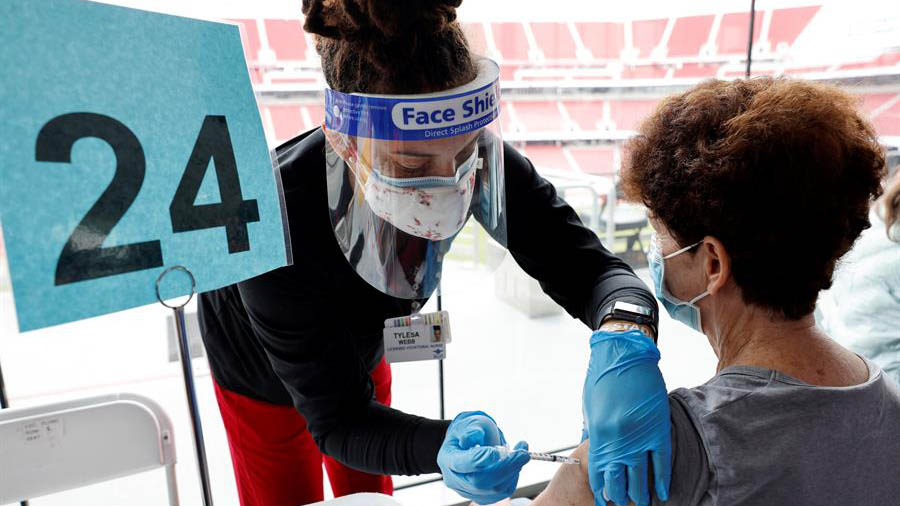WASHINGTON – The United States reached the vaccination of 10% of its population, when 33.7 million people have received at least one of the 44.7 million doses administered, reported this Wednesday the Centers for Disease Control and Prevention (CDC, for its acronym in English).
About 10.4 million people have received both doses of the vaccine and, with the exception of Kansas, Missouri and Alabama, in the rest of the country the rate of vaccines administered exceeds 11,000 per 100,000 inhabitants.
According to the CDC, since the pandemic began, more than 27 million cases of COVID-19 have been confirmed and more than 473,000 people have died from that disease in the United States, which has a population of about 330 million inhabitants.
The president, Joe Biden, has promised that his Administration will ensure that 100 million people receive at least the first dose of the vaccine in the first 100 days of his government, that is, on April 30.
But it will be difficult to fulfill that promise if the current pace is maintained, since since inoculations began in mid-December, the process has encountered difficulties both in the volume of vaccine production, as well as in their distribution and public access to the same.
Not in vain, and according to the latest data, there is still a large difference between the doses distributed (65.9 million) and those administered to the population (44.7).
The nun, whose religious name is Sister André, is the second-oldest known living person in the world, according to the Gerontology Research Group, which validates the details of people believed to be 110 years old or older.
DIFFERENT CRITERIA
States have adopted different methods to prioritize vaccination and, in general, the first people to access inoculation have been long-term patients, such as those in nursing homes, and staff working in the nursing home sector. Health.
Add to that that, as of February 1, 29 states and the District of Columbia had expanded eligibility for COVID-19 vaccines to include people 65 and older.
However, others are behind schedule, such as in Delaware, where authorities said Tuesday that the state will not begin, as planned, on March 11 a second phase of vaccination for other segments of the population due to “an extremely limited “dose.
The governor assured that it is of the utmost importance that the Hispanic community have access to the vaccine.
According to data from the CDC, 23.4 million doses of the vaccine manufactured by Pfizer and BioNTech have been administered, while the other that has been authorized so far in the United States, Moderna, has received 21.1 million.
The Government hopes that the approval of new vaccines will boost daily vaccination figures and it is expected that this month, the one manufactured by Johnson & Johnson, which is 66% effective in preventing disease from moderate to severe, according to one study.
RACIAL DISPARITY
The North Carolina website shows that in that state, 78% of those who have received the vaccine are white, 14% are African-American and only 2% are Latino.
This would be confirmed by CDC data, which indicated that in the first month of vaccination, from December 14, 2020 to January 14, 11.5% of those who had received at least one dose were Latino and 60.4% They were white, although Hispanics represent 18% of the country’s population, a disparity criticized by many groups.

